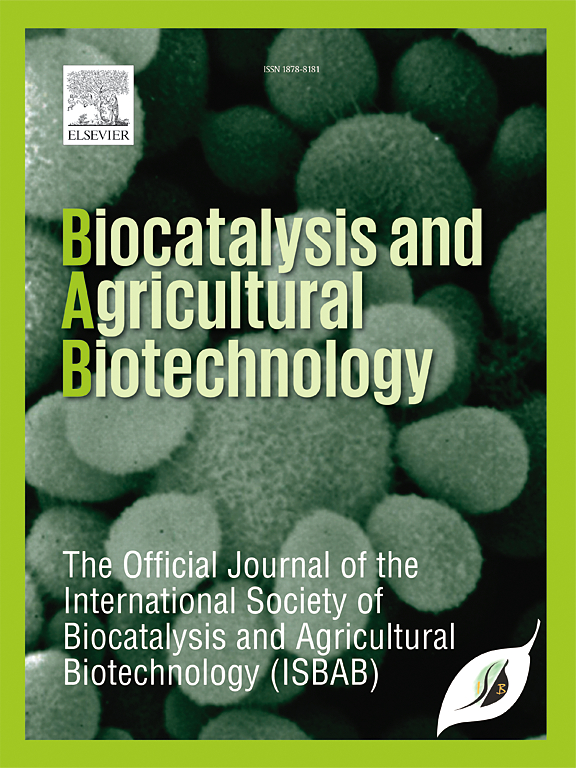Morphological, ultrastructural, biochemical and yield attributes variations in Nigella sativa L. by cadmium (Cd) stress: Implications for human health risk assessment
IF 3.4
Q2 BIOTECHNOLOGY & APPLIED MICROBIOLOGY
引用次数: 0
Abstract
This study was conducted in the pots where each pot was filled with 4 kg soil that was contaminated with varying concentrations of cadmium (Cd) which are 1.5 mM, 2.0 mM, 2.5 mM, 3.0 mM, 3.5 mM, and 4.0 mM equal to 168.61, 224.82, 281, 337.23, 393.44 and 449.64 mg/L respectively), except the control group, each treatment was replicated thrice (n = 3) including control. We evaluated and examined growth, yield, metal stress tolerance, and metal buildup characteristics at the harvesting stage of black cumin (Nigella sativa L.) plants. The findings indicated that all levels of Cd had a substantial (p ≤ 0.05) negative impact on black cumin plants' growth and yield-related characteristics. Low (1.5 mM) to high doses (4.0 mM) of Cd significantly (p ≤ 0.05) reduced chlorophyll a (30%–72%), chlorophyll b (25%–69%) and total chlorophyll (56% to 82%) levels in the fresh leaf tissues, as well as significantly (p ≤ 0.05) decreased the fruit yield (12%–45%) and seed yield (39%–75%) of black cumin plants. Energy dispersive x-ray (EDX) analysis and scanning electron microscopy (SEM) of control and Cd-treated plant leaf samples showed significant Cd accumulation, and the ultrastructure of both revealed that Cd stress reduced the stomatal density and size of the stomatal aperture compared to the control. Bioaccumulation levels of Cd in the seeds of all treated plants are above the threshold limit (0.3 mg/kg) set by the World Health Organization (WHO) for medicinal plants and are unsafe for human consumption. Therefore, farmers must avoid cultivating black cumin crops in Cd polluted soil from economic and health perspectives.

求助全文
约1分钟内获得全文
求助全文
来源期刊

Biocatalysis and agricultural biotechnology
Agricultural and Biological Sciences-Agronomy and Crop Science
CiteScore
7.70
自引率
2.50%
发文量
308
审稿时长
48 days
期刊介绍:
Biocatalysis and Agricultural Biotechnology is the official journal of the International Society of Biocatalysis and Agricultural Biotechnology (ISBAB). The journal publishes high quality articles especially in the science and technology of biocatalysis, bioprocesses, agricultural biotechnology, biomedical biotechnology, and, if appropriate, from other related areas of biotechnology. The journal will publish peer-reviewed basic and applied research papers, authoritative reviews, and feature articles. The scope of the journal encompasses the research, industrial, and commercial aspects of biotechnology, including the areas of: biocatalysis; bioprocesses; food and agriculture; genetic engineering; molecular biology; healthcare and pharmaceuticals; biofuels; genomics; nanotechnology; environment and biodiversity; and bioremediation.
 求助内容:
求助内容: 应助结果提醒方式:
应助结果提醒方式:


